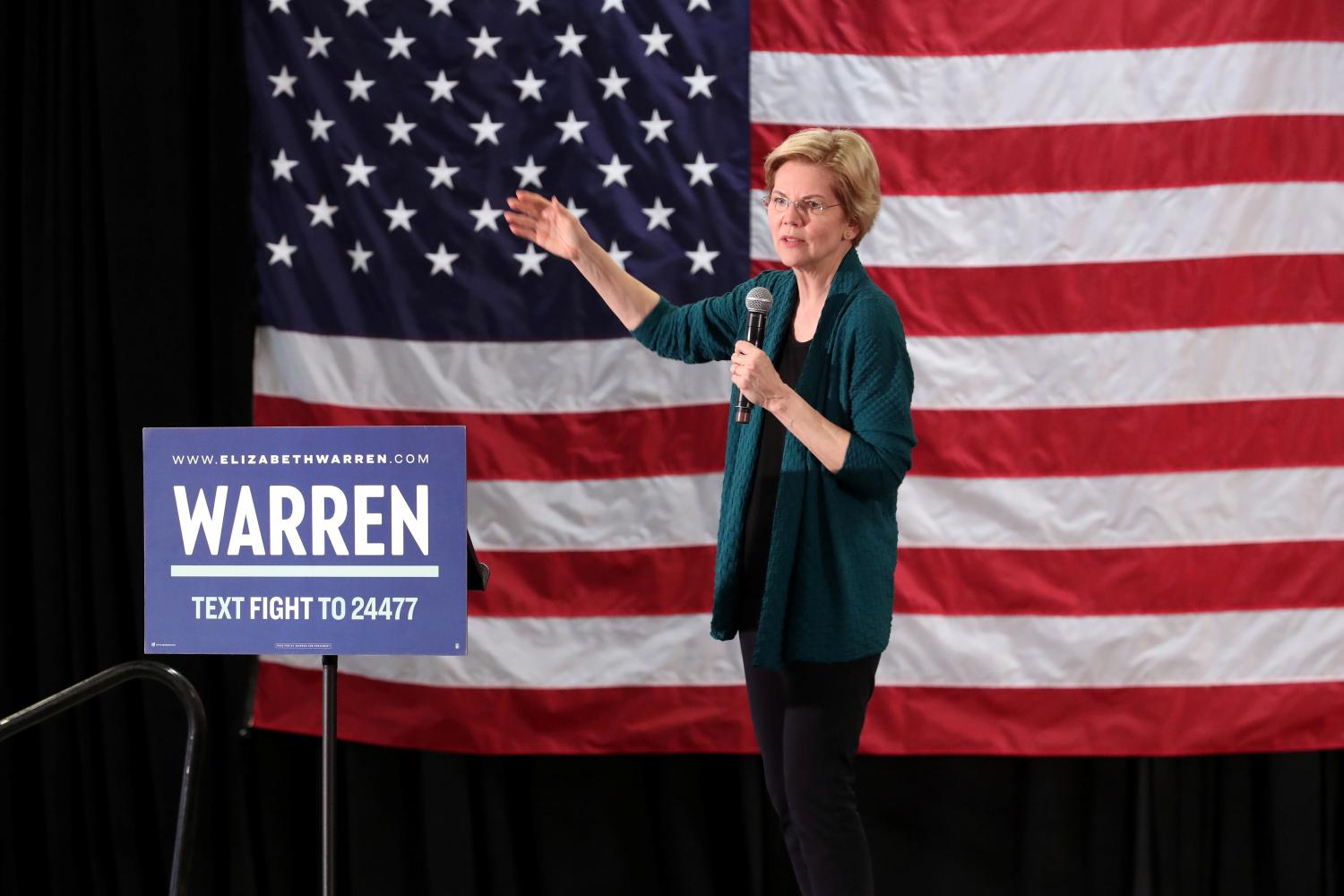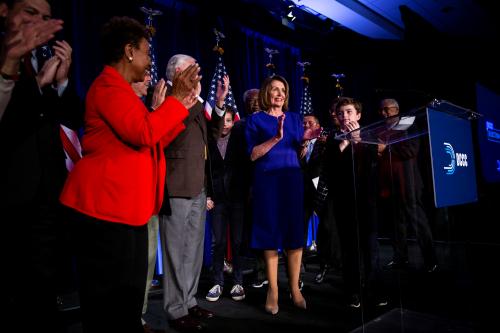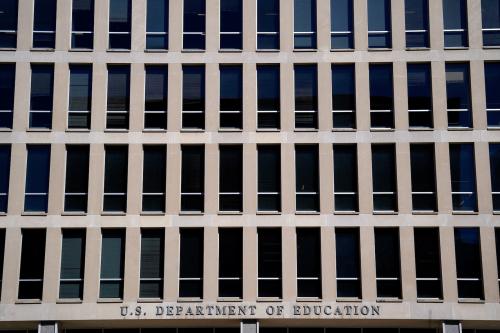On Monday, Elizabeth Warren released her plan for K-12 education. It’s a striking set of proposals, remarkable in their breadth, that would dramatically reshape the federal role in education.
This post steps back from the plan’s policy specifics to consider what the plan tells us about education politics and policy in the U.S. today. Here are a few takeaways:
1. Betsy DeVos’s long-term impact on K-12 education will come from the reaction to her time in office—not her time in office.
Despite concerns about the havoc she would wreak on K-12 education, DeVos has been a largely inconsequential education secretary, at least in terms of direct, lasting policy impact. Much of DeVos’s K-12 work has involved undoing sub-regulatory guidance (on issues such as student discipline), the type of work that could be undone by her successor with the stroke of a pen. Some of this is by design, since DeVos and the Republicans believe in a modest federal role in education. However, DeVos surely would have liked to enact a federal tax-credit scholarship program back when Republicans had majorities in the House and Senate. Nothing came of that, nor of the other major policy ideas floated by DeVos and her team.
In fact, DeVos is likely to have a lasting effect on K-12 education policy in the U.S., but it will be defined by Democrats’ reaction to her time in office. DeVos is a reviled figure among Democrats, and her dismissive critiques of traditional public schools—coupled with her embrace of just about any alternative to the existing system—has reshaped many Democrats’ views on education. This is most evident with charter schools. Democrats have soured on charter schools during DeVos’s tenure.
Warren’s plan reflects this change in Democrats’ views, with a stunningly harsh set of charter school proposals (despite the continued popularity of charters in some Democratic circles). This includes a call to end the federal Charter Schools Program. Other parts of the plan also channel Democrats’ frustration with DeVos, such as a pledge to replace DeVos with someone who “has been a public school teacher, believes in public education, and will listen to our public school teachers, parents, and students.”
2. Democrats continue to be the party of rich, ambitious policy proposals in education, but continue to lack a clear framework for their ideas.
The contrast between Warren’s K-12 education plan (almost 7,500 words by my computer’s count) and Trump’s 2016 plan (a smattering of vague declarations and “performance art”) is striking. Some of the difference in policy specifics can be attributed to today’s Republican Party often seeming disinterested in policy and governance. But that isn’t the entire story. The last few decades of K-12 education reform have been dominated by two simple ideas from political conservatives: choice and accountability. Where progressives have offered depth and detail, conservatives have offered easy-to-understand frameworks for school improvement. Those simple ideas have won out—often drawing progressives to work on their causes.
Warren’s plan is remarkably broad, deep, and ambitious, with plenty to like for those concerned about quality and equity in U.S. schools. However, it’s also a little dizzying. Most progressives—and probably most Americans—would support many of the dozens of proposals included the plan. But would they have a clear sense of Warren’s, or Democrats’, underlying vision for how to improve schools?
3. Teachers’ unions remain a force in education politics even after the Supreme Court’s Janus decision.
In 2018, conservatives celebrated when the U.S. Supreme Court, in a 5-4 ruling, prohibited public-employee labor unions from requiring nonmember workers to pay union fees. Teachers’ unions had long wielded extraordinary power in education politics, with the vast majority of their support going to Democrats and progressive groups. The thinking was that many teachers would jump at the opportunity to not pay union dues, and the unions—which were already seeing declining membership and revenues—might suffer losses that would cripple their political influence.
The 2020 Democratic presidential race has shown hardly any signs of lost influence. Candidates have aggressively courted the support of the National Education Association (NEA) and American Federation of Teachers (AFT). Warren’s plan is the latest sign of the unions’ continued strength. It incorporates proposals that align broadly with both teachers’ interests and Warren’s expressed principles (e.g., increased teacher pay and debt-free college). It also incorporates specific proposals that are likely of great interest to unions (e.g., keeping states from passing right-to-work laws and allowing only school districts to authorize charter schools). Leaders of the NEA and AFT expressed strong support for the plan.
4. Democrats are open to major federal investments in education—and to using those investments to encourage state policymaking.
A clear theme from the Democratic candidates’ K-12 proposals is that Democrats see reason and opportunity to sharply increase federal funding in K-12 education. The reasons vary: inequities in a school finance system built on property taxes; low teacher salaries causing unrest across states and districts; and growing evidence that education spending pays off in student outcomes. The federal government is positioned to help. Protecting and promoting the opportunities of disadvantaged students is perhaps its most fundamental role in education, and many cash-strapped states would welcome an influx of federal dollars.
Warren’s plan—like other candidates’ plans—promises a meaningful investment. Among other proposals, she pledges $20 billion per year in additional funding for students with disabilities, $100 billion over 10 years in “Excellent Grants” for school-specific investments, and a quadrupling of Title I funding for students in poverty (an additional $450 billion over 10 years).
An especially intriguing feature of Warren’s Title I proposal would “condition access … on states chipping in more funding, adopting more progressive funding formulas, and actually allocating funding consistently with these new formulas.” This takes a page from the Obama administration’s playbook. The Obama administration dangled Race to the Top funds in front of states, with potential for hundreds of millions of dollars in federal funds—if state leaders committed to pursue the administration’s policy priorities. It was a clever, controversial way of creating leverage. With her Title I proposal, Warren seems willing to go down this path—opposition be damned—with weighted student funding formulas as her policy of choice.
Of course, politics aside, Warren’s policy proposals are notable in themselves. For an election that some bemoan has neglected K-12 education, we now have a fascinating set of ideas on the K-12 table.
The Brookings Institution is committed to quality, independence, and impact.
We are supported by a diverse array of funders. In line with our values and policies, each Brookings publication represents the sole views of its author(s).








